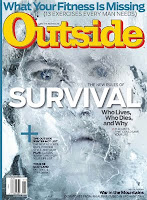Though the blog’s been quiet, lots has been going on here at EP. We though it was about time that we got everyone up to speed on the latest.
Recent Happenings:
350.org River of Action
200 paddlers got together on the Willamette River in downtown Portland as part of the 350.org International Day of Climate Action.
Smithsonian Article
http://www.smithsonianmag.com/science-nature/Evolution-in-the-Deepest-River-in-the-World.html
Kyle Dickman captures the scientific significance of the Congo River expedition on Smithsonian.com. Syndicated by Yahoo.com and seen by more than a million readers.
Outside Clip
http://outside.away.com/outside/culture/200911/survival-guide-paperless.html
Trip Jennings recounts the incident with AK-47s that nearly stopped EP's expedition down the Congo for Outside Magazine's November issue, then offers advices on how to keep yourself safe, wherever you are.
Coming Up:
The Ultimate Recession
Andy Maser looks at climate change in Bolivia, from seat of his kayak, for Wend's December/January issue.
National Geographic's Expedition: Granted
Come November 19, EP's plan to return to the Democratic Republic of Congo to help stop elephant poaching will solidify. Trip's up on Ben Horton by 40% for National Geographic's Expedition Granted. 2010: Back to the Congo.
Vote for Team Elephant at the contest website: http://channel.nationalgeographic.com/channel/expedition-week-granted
River of Doubt
November 23, EP's off again. This time, their joining National Geographic Television and Zeb Hogan on Brazil's famed River of Doubt to guide scientists through Class V whitewater and hook jet-ski sized catfish from their rafts.
(NPR Story on Doubt): http://www.npr.org/templates/story/story.php?storyId=4986859
Follow us on Twitter!
Andy: http://twitter.com/amaser
Trip: http://twitter.com/tripjennings
















